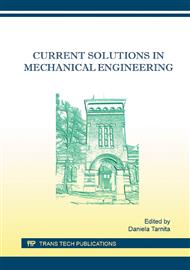p.297
p.303
p.309
p.315
p.319
p.323
p.329
p.335
p.341
Experimental Investigation on the Effect of Bioethanol on Emission Performance of Diesel Engine for Rapeseed Biodiesel-Diesel Blends
Abstract:
Global warming and climate change are the motives to find a solution for emission reduction of diesel engines. Bioethanol is renewable fuel which can be used in diesel engine as a part of biodiesel-diesel blends. The effect of bioethanol on the emission performance of diesel engine for rapeseed biodiesel-diesel blends as a function of engine load is evaluated in this paper. KDE 6500E diesel generator is used for this purpose. Carbon monoxide (CO), unburned hydrocarbons (HC), oxygen (O2) and carbon dioxide (CO2) emissions are recorded with the help of VLT-458 exhaust gas analyzer. Blends with higher concentrations of bioethanol have shown lower CO emissions while HC emissions increase with the increase in bioethanol concentration in the blends. CO2 emissions are recorded more at higher loads for all types of biodiesel and bioethanol concentrations than that of diesel fuel.
Info:
Periodical:
Pages:
319-322
Citation:
Online since:
January 2016
Authors:
Keywords:
Price:
Сopyright:
© 2016 Trans Tech Publications Ltd. All Rights Reserved
Share:
Citation:


